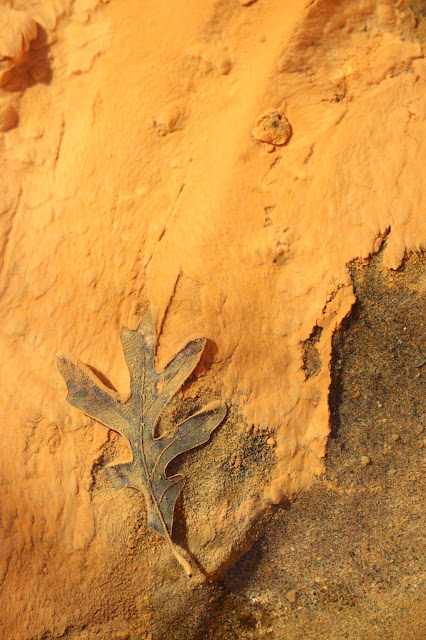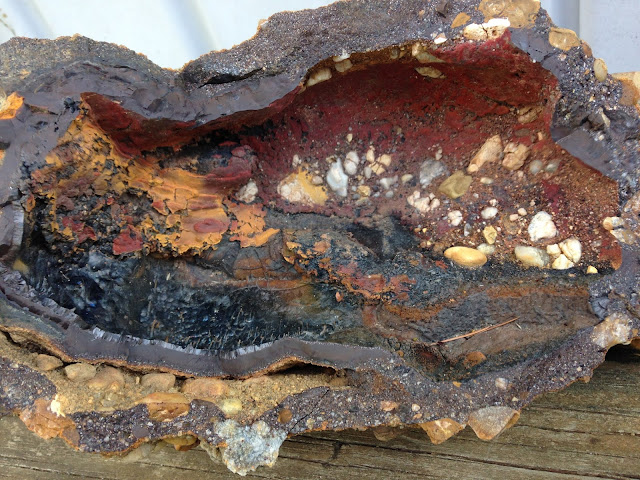Future Fossil in Bog Iron?
This oak leaf is lying on the bottom of a muddy creek where iron oxide is so rich in the water that it coats everything orange. The iron-rich mud will eventually become bog iron. If this leaf doesn't disintegrate before the mud hardens, it might become part of the fossil record.
There are already fossils inches below this leaf in southern NJ. They are shells leftover form the Cretaceous, largely permineralized by that iron oxide (the brown material seen below) as well as iron phosphate minerals like Vivianite (oxidized to black), as seen in this Exogyra shell.
At other sites, bog iron has preserved footprints, plant impressions and even Dinosaur bones. In the 1850s, workers in a bog iron pit outside of Washington, DC discovered what were eventually identified as Cretaceous dino bones. They are still finding them there today. https://www.washingtonpost.com/wp-dyn/content/article/2009/10/26/AR2009102603281.html
Staff and volunteers at Stratford Hall, in northern Virginia, have been studying Pleistocene trackways from 60+ species and counting as they fall out of the clifftops along the Potomac River. The Auraucaria sp. twig and leaf fossils shown below came from a Cretaceous iron deposit in South Dakota.
Most of the time, if biomatter is trapped in the matrix, little remains as the bog solidifies, but the stone can be amazingly sculptural in its own right. Holes that were left by long-decayed plants and animals form cavities in the stone that may fill with colorful iron oxide powders and even crystals inside. Gasses bubbling up through the mud create holes that end up as tubes in the rock. In Delaware, Limonite and Siderdite geodes are rather common where distinct fossils are absent.







Comments
Post a Comment